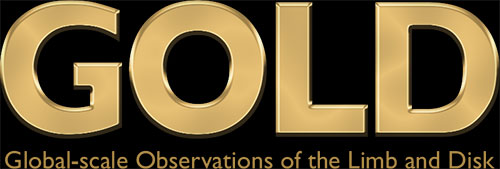
Liftoff of the Ariane 5 rocket from the Guiana Space Centre in Kourou, French Guiana at 5:20 p.m. EST, Thursday, Jan. 25, 2018. GOLD is a hosted payload on the SES-14 commercial communication satellite, one of two satellites launched atop the Ariane 5 vehicle. (Courtesy: Arianespace)
NASA Statement on Impact to GOLD Mission After Launch Anomaly
SES has informed NASA there is minimal impact on the SES-14 satellite carrying the agency’s GOLD instrument after a launch anomaly on Jan. 25, 2018. The satellite will reach geostationary orbit four weeks later than originally planned. As the spacecraft is in good health, we expect no effect on the quality of observations and data. Originally, science operations were expected to start in mid-October. Our partners are working to maintain that timeline as close as possible. We will provide updates as they become available.
The GOLD mission launched at 5:20 p.m. EST, Thursday, Jan. 25, as a commercially hosted payload on the SES-14 satellite. The satellite was launched on an Ariane-5 rocket from the Guiana Space Centre in Kourou, French Guiana. GOLD will investigate the dynamic intermingling of space and Earth’s uppermost atmosphere and seek to understand what drives change in this critical region. Resulting data will improve forecasting models of the space weather events that can impact life on Earth, as well as satellites and astronauts in space.
Following an Ariane-5 launch anomaly, SES has successfully established connection with the SES-14 satellite.
Statement from SES:
Guiana Space Centre, Kourou, 26 January 2018 – Following the anomaly that occurred during the launch on an Ariane 5 rocket last night, SES announces that it has successfully established a telemetry and telecommand connection to its SES-14 spacecraft and is setting up a new orbit raising plan now. SES-14 would thus reach the geostationary orbit only four weeks later than originally planned. SES confirms that the spacecraft is in good health, all subsystems on board are nominal, and the satellite is expected to meet the designed life time.
SES-14 will be positioned at 47.5 degrees West to serve Latin America, the Caribbean, North America and the North Atlantic region with C- and Ku-band wide beam coverage and Ku-band high throughput spot beam coverage.



